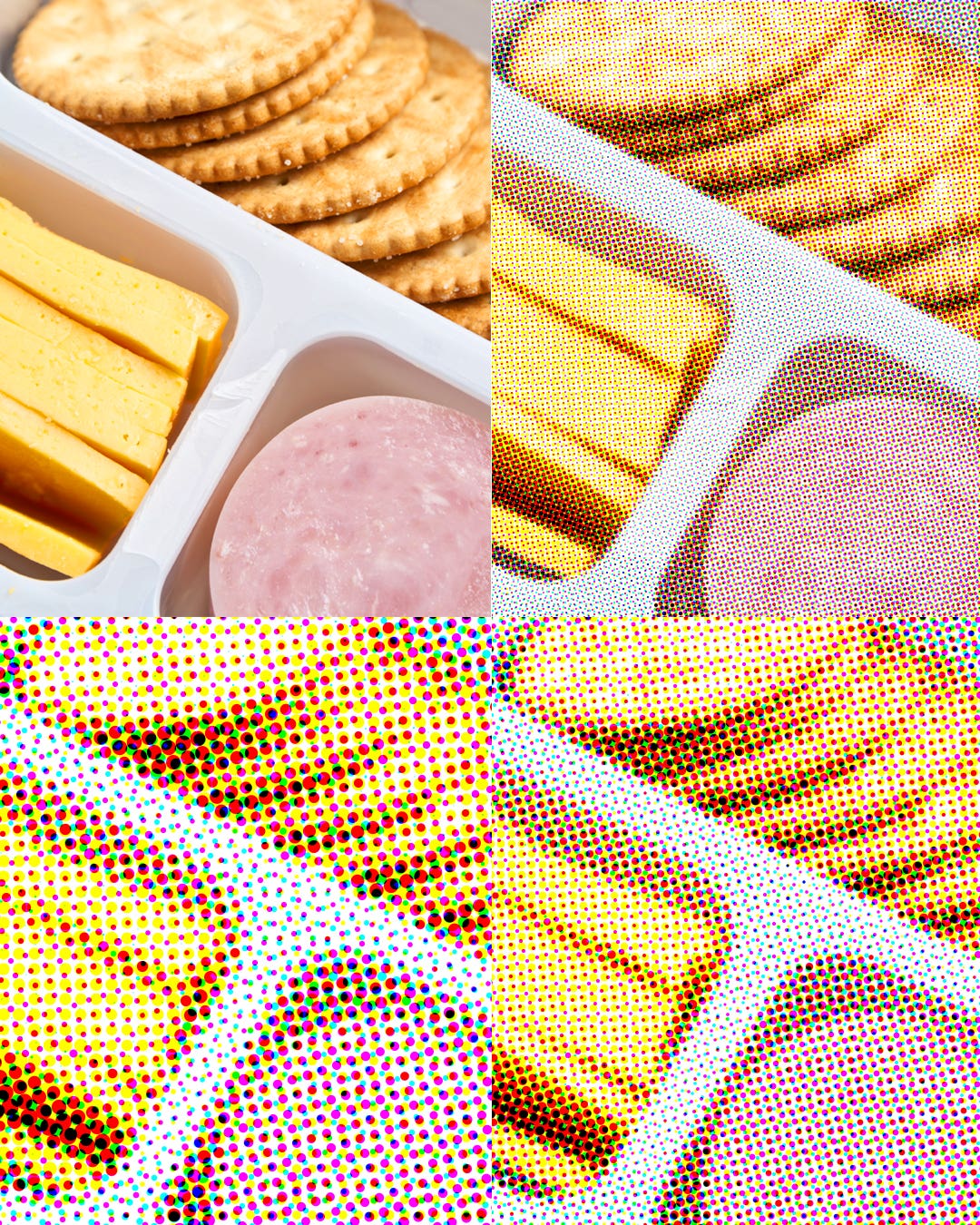My Mom Said ‘I Love You’ with a Lunchable
The 1990s health food craze passed over my family. In retrospect, that was a good thing.

I grew up in Seattle in a pink apartment building with peeling paint, but I didn’t know I was poor until the day a third grade classmate came to school with a blood orange in her lunchbox. Everyone at our table marveled at the ruby-red fruit as I sheepishly peeled back the plastic of my Lunchable. I felt ashamed, but didn’t quite know why.
The Lunchable was a fixture of the ‘90s school cafeteria. Some kids went crazy for the version with the geometrically perfect squares of American cheese and rounds of ham, but I preferred the sausage pizza combo. Sure, the so-called “crusts” were like chewy cardboard, and the shredded white cheese and pepperoni slices were rubbery, but I loved the process of assembling the pizzas myself. Introduced in 1985 by Oscar Meyer as a way to push bologna, the Lunchable targeted both kids who wanted to control lunchtime and working moms looking to save time by buying pre-packed lunches.
To a certain subset of upper-middle-class suburban moms—the type that shopped for organic and “all-natural” products—the Lunchable represented everything wrong with food: It contained high-fructose corn syrup, was high in fat and salt, and came from a factory, not a farm.
But in my house, the Lunchable was luxury. How can it be that parents raising kids in the same generation had such disparate views of one of the decade’s quintessential on-the-go foods? The answer, I’ve come to realize, lies in income inequality.
My mom was a single parent who worked full time as a nurse. She relied on Lunchables to feed me. I had no childhood home: We moved whenever she could no longer pay the rent. In middle school, I wore my Gap jeans rolled up to the knees to hide the fact we couldn’t afford new ones.
The Lunchable was one of the few treats she ever bought for me. The snack cabinet was a foreign concept in our home. I sometimes ate salsa straight from the jar as a snack while I waited for her to get home from work.
What I didn’t know then but appreciate now is that the Lunchable was a symbol of how hard my mom was trying to both keep me fed and help me feel like I belonged among my peers. When I saw the blood orange, I realized that there was a world of food out there that we simply couldn’t afford. Of course, other kids showed up to the cafeteria with a Lunchable from time to time, but now I wonder if it was a rare treat, a respite from all that healthy stuff they ate at home.
I wasn’t close enough with the classmate who brought the blood orange to know whether her parents filled their cabinets with Lay’s and Hamburger Helper—after all, rich people can be lazy cooks, too. The difference was, her mom could afford to buy exotic citrus at PCC, Seattle’s all-natural cooperative grocery, while my mom was barely able to afford potatoes and pork chops from Safeway.
I like to think that if we’d been better off, my mom would’ve stocked our refrigerator with organic produce and fresh, home-cooked meals. But that’s not the point. Her love shone through brightly enough in microwave dinners. When my mom rallied her zapped energy to make Betty Crocker’s au gratin potatoes in a box, it felt like hitting the jackpot. I loved to watch her pour the cream over the dehydrated potatoes and sprinkle the pouch of yellow cheese dust on top, then scatter the soft pats of butter around the baking dish. When she scooped the creamy potatoes topped with burnt, crispy, bubbling shredded cheese onto my plate, I felt her devotion like a protective embrace.
To say that poor people don’t care about what their kids eat because they can’t afford expensive food is classist. That belief, prevalent in ‘90s cultural discourse, ignores the fact that so many parents in America work exhausting, thankless jobs, often sacrificing their own health to nourish their children. Any criticism, then, should be directed toward the government, which still subsidizes junk food and—more importantly—doesn’t provide paid parental leave or direct much funding toward eradicating food deserts.
Ultimately, there’s no such thing as “good” or “bad” food when it comes to parents doing the best they can. My mom said “I love you” with a Lunchable, and it was nothing to be ashamed of.
Keep Reading
Continue to Next Story










